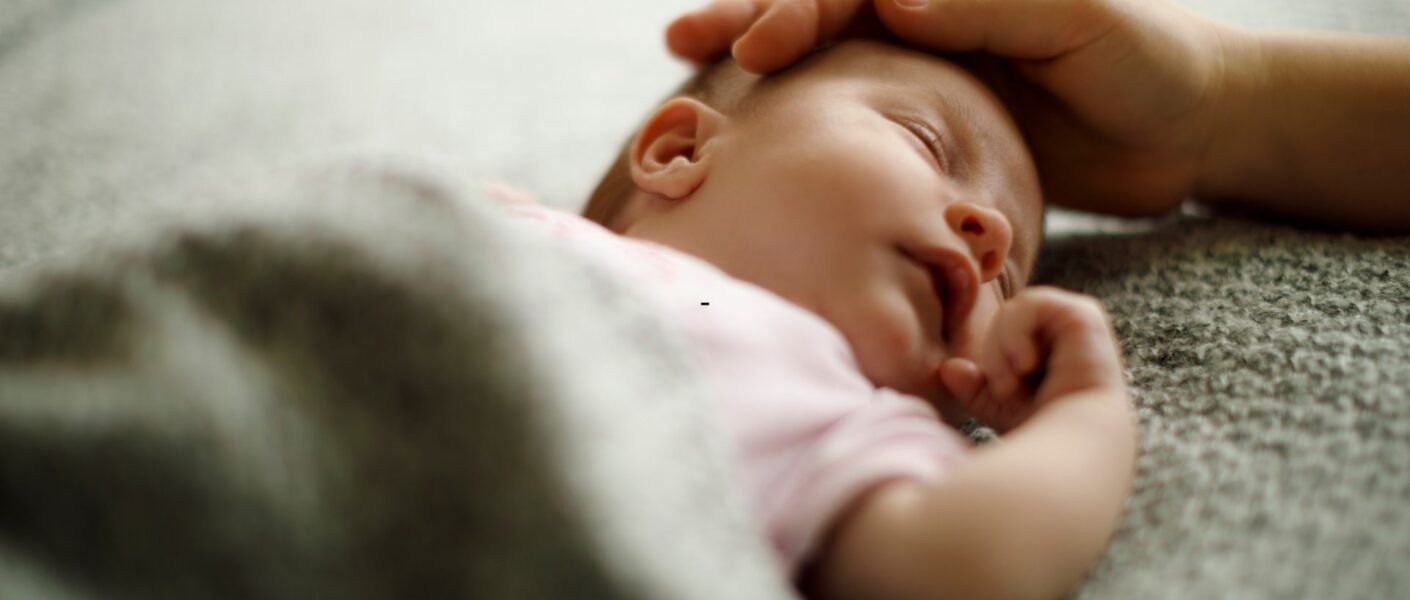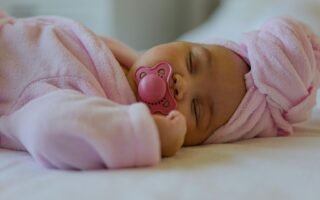What is a Safe Sleep Environment for My Baby? Bringing a new baby home is a joyous occasion, filled with love, excitement, and…a whole lot of questions. Among the most crucial concerns for new parents is ensuring a safe sleep environment for their little one. Sudden Infant Death Syndrome (SIDS) is a scary reality, but understanding and implementing safe sleep practices can significantly reduce the risk.
This guide will walk you through the key elements of creating a safe sleep environment for your baby, based on recommendations from leading health organizations.
Understanding the Importance of Safe Sleep
Before diving into the specifics, it’s essential to understand why safe sleep is so critical. SIDS is the sudden and unexplained death of an infant under one year old. While the exact cause of SIDS remains unknown, research has identified several risk factors and protective measures.
Creating a safe sleep environment directly addresses many of these risk factors, offering the best possible protection for your baby.
The ABCs of Safe Sleep: Alone, Back, Crib
The American Academy of Pediatrics (AAP) emphasizes the “ABCs” of safe sleep: Alone, Back, and Crib. Let’s break down each element:
Alone: A Crib Free of Hazards
“Alone” means your baby should sleep in their own sleep space, without any other people. This recommendation is based on evidence that co-sleeping (sharing a bed with your baby) increases the risk of SIDS. While it might seem comforting to have your baby close, adult beds are not designed for infant safety.
They often have soft mattresses, pillows, blankets, and other hazards that can obstruct a baby’s airway. Babies should never sleep on an adult bed, couch, or armchair by themselves, with others, or with pets. Couches and armchairs are particularly dangerous.
What does “Alone” really mean in practice?
- No co-sleeping: Avoid sharing a bed with your baby, whether it’s a regular bed, couch, or armchair.
- Separate sleep surface: Your baby needs their own designated sleep space, such as a crib, bassinet, or portable play yard.
- Bare is best: Keep the sleep surface free of any soft objects, loose bedding, or toys. This includes pillows, blankets, quilts, bumper pads, and stuffed animals.
Back: Always on Their Back
“Back” refers to the recommended sleep position for infants: on their back. Since the early 1990s, the “Back to Sleep” campaign (now known as “Safe to Sleep”) has significantly reduced the incidence of SIDS by promoting this practice. Placing your baby on their back for sleep, for all sleep times—naps and at night, is crucial.
Why is back sleeping so important?
- Airway safety: When babies are placed on their stomachs, they are more likely to re-breathe their own exhaled air, which can lead to a decrease in oxygen levels.
- Reduced risk of suffocation: Babies have limited head and neck control. If placed on their stomach, they may not be able to lift their head if their face becomes pressed against a soft surface.
- Consistent practice: Place your baby to sleep on back for every sleep for the first 12 months.
What if my baby rolls over onto their stomach?
Once your baby can consistently roll from back to stomach and stomach to back on their own, you don’t need to reposition them. However, always place them on their back to initiate sleep.
Crib: A Safe and Sturdy Sleep Space
“Crib” signifies the type of sleep surface recommended for infants: a crib, bassinet, or portable play yard that meets safety standards. The sleep surface should be firm and flat, covered by a fitted sheet.
Key features of a safe crib:
- Firm mattress: Use a firm, flat (not at an angle or inclined) sleep surface, such as a mattress in a safety approved crib mattress, bassinet, or portable crib.
- Fitted sheet: Use a snuggly fitted sheets on the mattress.
- No gaps: No gaps around the edges of the mattress.
- Slats: Slats no more than 2 ⅜ inch apart.
- No drop-down sides: No drop-down sides.
- Safety Standards: Ensure the crib meets current safety standards set by the Consumer Product Safety Commission (CPSC).
Room Sharing (But Not Bed Sharing):
The AAP recommends that babies sleep in the same room as their parents, close to their parents’ bed, but on a separate surface, for at least the first six months, ideally the first year of life. This practice can reduce the risk of SIDS by as much as 50%. Room sharing makes it easier to monitor your baby and respond to their needs, such as feeding or comforting.
Other Important Safe Sleep Considerations
Beyond the ABCs, several other factors contribute to a safe sleep environment:
Temperature Regulation
Overheating can increase the risk of SIDS. Dress your baby in light clothing for sleep and keep the room at a comfortable temperature. Avoid overdressing or using heavy blankets. A good rule of thumb is to dress your baby as you would dress yourself for sleep.
Smoke-Free Environment
Exposure to smoke, both during pregnancy and after birth, is a significant risk factor for SIDS. Mothers who smoked, drank, or used drugs during pregnancy and after birth, increase the babies risk of SIDS.Ensure a smoke-free environment for your baby, both inside your home and in any other spaces where they spend time.
Breastfeeding
Breastfeeding has been shown to have a protective effect against SIDS. If possible, breastfeed your baby for at least six months.
Pacifier Use
Offering a pacifier at naptime and bedtime may also reduce the risk of SIDS. If you are breastfeeding, wait until breastfeeding is well-established (usually around 3-4 weeks) before introducing a pacifier.
Prenatal Care
Mothers who have inadequate prenatal care increase the babies risk of SIDS.
Skin-to-Skin Contact
A newborn should be placed skin-to-skin with their parent as soon after birth as possible, for at least an hour.
Debunking Common Safe Sleep Myths
Several misconceptions surround safe sleep. Let’s address a few:
- Myth: Babies sleep better on their stomachs. While some babies might seem to sleep better on their stomachs, this position significantly increases the risk of SIDS. Back sleeping is always the safest option.
- Myth: Propping up the crib mattress helps with reflux. Inclined sleepers and other products that position babies at an angle are not safe and are not recommended. A firm, flat sleep surface is essential.
- Myth: Bumper pads protect babies from injury. Bumper pads pose a suffocation risk and offer no real protection. They should not be used in the crib.
Creating a Safe Sleep Checklist
To help you implement these recommendations, here’s a safe sleep checklist:
- [ ] Baby sleeps on their back for every sleep.
- [ ] Baby sleeps in their own crib, bassinet, or portable play yard.
- [ ] The sleep surface is firm and flat.
- [ ] The crib is free of soft objects, loose bedding, and toys.
- [ ] The room temperature is comfortable.
- [ ] The environment is smoke-free.
- [ ] Baby is dressed in light clothing for sleep.
- [ ] Room sharing (but not bed sharing) is practiced.
- [ ] Pacifier is offered at naptime and bedtime (optional, after breastfeeding is established).
- [ ] Crib meets current CPSC safety standards.
When to Consult Your Pediatrician
If you have any concerns about creating a safe sleep environment for your baby, or if your baby has any specific health conditions, consult your pediatrician. They can provide personalized recommendations based on your baby’s individual needs.
Conclusion
Creating a safe sleep environment for your baby is one of the most important things you can do as a parent. By following the recommendations outlined in this guide, you can significantly reduce the risk of SIDS and provide your baby with a safe and comfortable sleep space. Remember the ABCs: Alone, Back, and Crib. Stay informed, stay vigilant, and enjoy the precious moments with your little one.
References
- Safe Sleep – AAP. https://www.aap.org/en/patient-care/safe-sleep/?srsltid=AfmBOoqwvmaB3HRRaxy476d78ad5XwflCj0T3MizIQW1QvRdN24bVLh-
- ‘How to Keep Your Sleeping Baby Safe: AAP Policy Explained’. https://www.healthychildren.org/English/ages-stages/baby/sleep/Pages/a-parents-guide-to-safe-sleep.aspx
- Safe Sleep Environment. https://safetosleep.nichd.nih.gov/reduce-risk/safe-sleep-environment
- Infant Safe Sleep | Johns Hopkins Medicine. https://www.hopkinsmedicine.org/health/wellness-and-prevention/infant-safe-sleep
- Helping Babies Sleep Safely | Reproductive Health – CDC. https://www.cdc.gov/reproductive-health/features/babies-sleep.html
- SIDS Risk Factors and Protective Factors – DHHS. https://dhhs.ne.gov/Pages/SIDS-Risk-Factors.aspx
- Sudden infant death syndrome (SIDS) – Symptoms and causes. https://www.mayoclinic.org/diseases-conditions/sudden-infant-death-syndrome/symptoms-causes/syc-20352800
- Sudden Infant Death Syndrome (SIDS) (for Parents) – Kids Health. https://kidshealth.org/en/parents/sids.html
- Are some babies at higher risk for SIDS? – HealthyChildren.org. https://www.healthychildren.org/English/tips-tools/ask-the-pediatrician/Pages/are-some-babies-at-higher-risk-for-sids.aspx
- Safe Sleep Checklist – Taking Cara Babies. https://takingcarababies.com/safe-sleep-checklist?srsltid=AfmBOoql_YwJzHoxws6OcB_e92Q9TadfezunetCbQ4zUm1S8a2PxD_x1
- SIDS: Safe Sleep Checklist – Baby Sleep Team. https://www.babysleepteam.com/blog/safe-sleep-checklist-baby-sleep-team
- Creating Safe Sleep Spaces: A Guide for Parents | Hello Family. https://www.hellofamilyspartanburg.org/blog/creating-safe-sleep-spaces-a-guide-for-parents
- Safe Sleeping Environment | Florida Department of Health. https://www.floridahealth.gov/programs-and-services/childrens-health/infant-safe-sleep-environment/index.html
I’m Cris Coelho, and motherhood has transformed my life!
As a speech therapist and early childhood educator, I’ve always been passionate about child development. But it was becoming a mother that truly opened my eyes to the real challenges and joys of this journey.
Here at Materníssima, I share everything I’ve learned — blending professional knowledge, real-life experience, and a heartfelt touch.
You’re very welcome here! 💕






